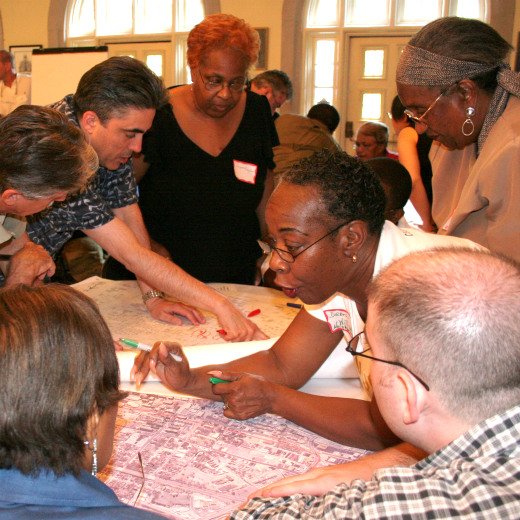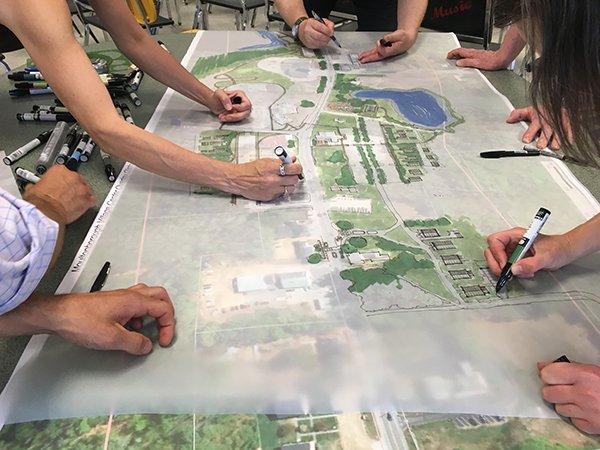The Future is Bright
BY MARC WOUTERS
The benefits of transforming I-787 for Albany and the Greater Capital Region are countless. These include potential for economic growth for the entire city, reduction in air pollution, improved riverfront access, opportunities for new housing choices for people from all walks of life, growth of small local businesses, and more.
A few years ago, I was asked to lead urban planning for Saskatoon, a city that had never built a major highway along its riverfront. During the public engagement process that we organized, residents told us they were in love with the city because the streets ended in views of sunrises, blue sky, trees, and the river. It impacted the entire character of the city. Younger generations left for the big city, but many eventually returned because the city had so much local charm. It’s just one example of how the quality of city’s character can have a positive impact on its ability to retain talent, attract new businesses, and maintain local culture.
Saskatoon, a charming city of 250,000 people, never built a riverfront highway. All of the riverfront of Saskatoon is parkland, and each street ends in a view of the sky and trees.
The Albany Riverfront Collaborative put forth a vision for transforming I-787, and gave us a sense how this transformation could benefit the city. Vehicles aren’t eliminated in the plan, but are relocated in a manner that allows residents and pedestrians to enjoy the river. Tearing down a highway like I-787 is complex. Examples as close as the Inner Loop in Rochester and further away like San Francisco’s Embarcadero show the effort is possible, and the cost of transformation eventually results in significant long-term benefits.
But how does a city address the numerous issues that come with the transformation of a highway? There are so many questions: how will the new traffic patterns work, what will the new parks look like, will new growth harm adjacent minority communities, is this an opportunity to build new housing that is accessible to all walks of life, can we halt the negative effects of gentrification, can small local businesses benefit from this change?
To resolve these design issues, residents and experts must work together. The most successful community engagement processes include meaningful interactive workshops, a high level of transparency, education sessions on a variety of topics, and a dialogue process that builds trust rather than division. In this process of ‘co-creation,’ technical experts aren’t the only people with critical information. The community is an essential contributor of local knowledge, area culture, history, and an understanding of what works and what hasn’t worked in the past.
In this process, designers and experts spend time with stakeholders, go on walking tours with community residents and leaders, and learn about the issues they are facing. The public engagement process may seem a bit time-consuming, but changing Albany’s riverfront will impact the city for generations to come. The design won’t be done in one or two passes. But eventually, as stakeholders see more ideas and discuss the alternatives, consensus starts to build around a shortlist of concepts. I’ve seen this consensus-building happen time and time again in many cities I’ve worked in and on highway projects like the Brooklyn Queens Expressway. If the public engagement process is well organized, people develop consensus plans that have broad support from the community. In the city I mentioned at the beginning of this blog, the master plan I led passed the City Council unanimously because it had been developed with strong collaboration of all the stakeholder groups.
Albany is a wonderful city, the opportunity is great, and its future is bright. •
Mr. Wouters RA, LEED AP is director of Marc Wouters | Studios and a leader in the design process for new communities, downtown master plans, resiliency planning, affordable housing, and various architectural projects. Projects led by Mr. Wouters have received AIA, CNU, and ULI Awards. Efforts include Empire State Development’s Downtown Revitalization Initiative, The Brooklyn Queens Expressway transformation, The Brooklyn Navy Yard Resiliency Plan, the award winning Columbia Heights Washington DC master plan, the Benice Sustainable Village Center near Prague, and work for the Smithsonian Institution.




